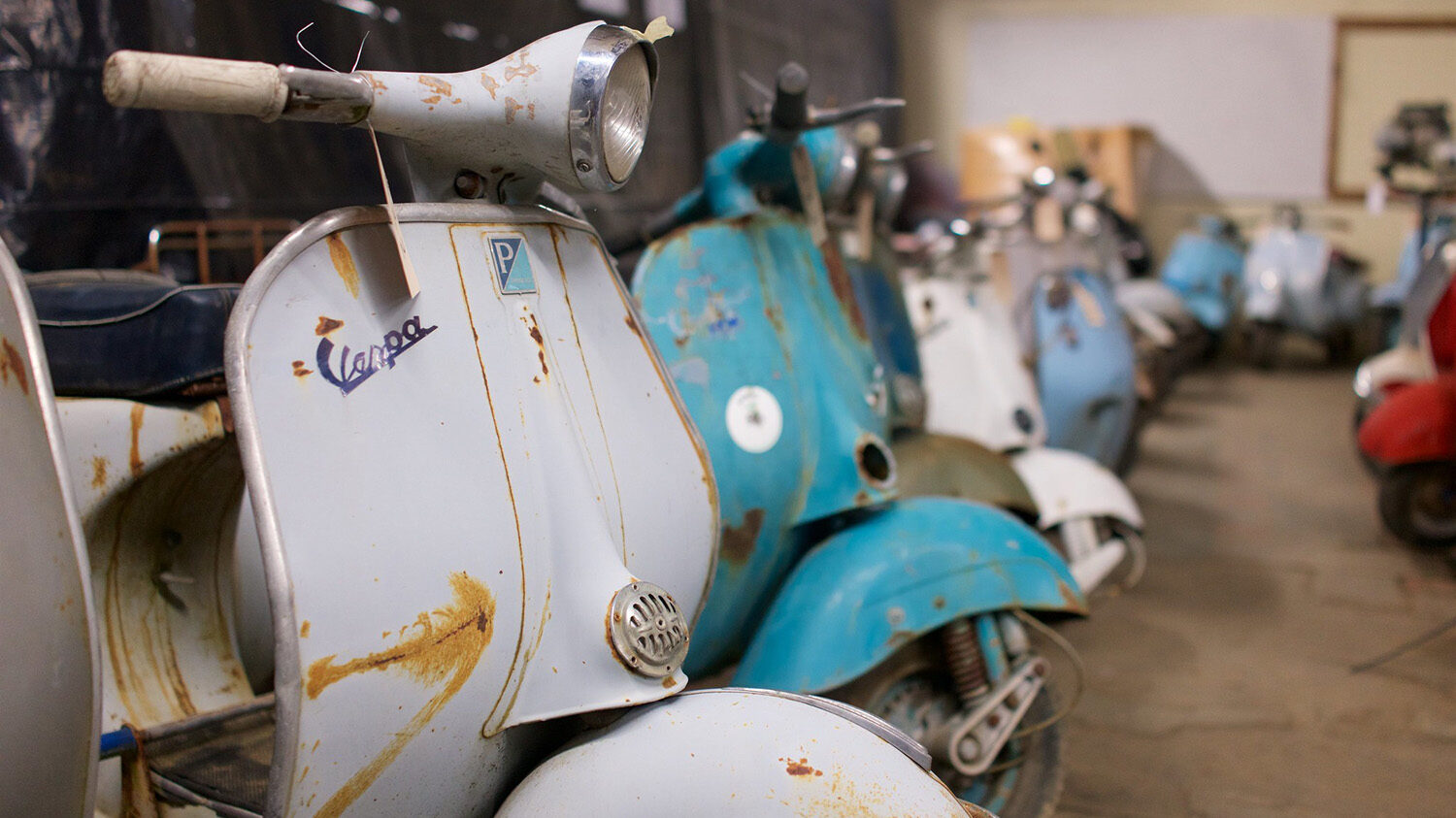On this subject, as with all things in life, there will be different opinions. Our advice is intended for all Vespa drivers who enjoy and have fun screwing and tinkering with their Vespa. And who also intend to declare war on rust.
Rust is the biggest natural enemy for the Vespa
What can be done against it? The most important question is when to take action. The answer is very simple: the sooner, the better. Once the rust has settled, it is difficult to eliminate.
So we have already answered the key question:
Yes, cavity sealing is always a good idea, especially in the folds of the body. You can forget the talk that cavity sealing is only useful for frequent drivers. How should the rust know if you drive the scooter a lot or not so much? Rust film can also form, which does not require any movement of the vehicle, for example when the moped is mothballed in the garage for the winter.
And one thing is certain: sooner or later, rust will be there. And it doesn’t ask if it’s welcome!
For prevention, however, there are fortunately numerous products for the care and maintenance of Vespa and scooter.

What does the term flash rust actually mean?
Rust is not a ready-made evil, but develops through simple chemical compounds of iron dust and oxygen from the air. When these combine, the metal begins to oxidize, initially producing flash rust (it is the little brother of “real” rust). This is harmless in itself. But the flash rust begins relatively quickly to eat into the layers of the metal and cause lasting damage. Since water can also form from mere humidity, the (dry) garage provides some protection, but not permanent.
So the obvious thing to do is to seal cavities to prevent them from becoming a breeding ground for flash rust/rust in the first place.
One wonders, of course, why Piaggio does not take precautions during the production of the scooter. There the opportunity would be favorable and quite reasonable to apply a cavity sealing. Probably it is a question of cost, and the Vespa is already comparatively expensive without this sealing. But after all, you’re not just paying for the name, you’re paying for the development that’s gone into it over the years.
Procedure for cavity sealing
Better to say it upfront:
It is not enough to remove the running board and – for example, with a probe, as some service dealers practice – spray in a little preservative. This is superfluous and not much good.
Which preservative should be used?
We recommend the long-lasting product Fluidfilm AS-R. One liter should be enough for our scooter.
Why do we recommend this product?
It does not harden completely and retains its enormous creeping ability for years. This is proven by long-term tests in the classic old timer scene, which in principle do not allow any discussion. Since Fluid Film is non-conductive, it can also be sprayed carelessly in the battery compartment (after the battery is removed, the base plate underneath can be sprayed).
Some claim that Fluid Film looks a bit modest. That may be true, but it can be largely compensated for by treatment with dry ice. And – let’s be honest – who keeps unscrewing the running board to look underneath? No one. Accordingly, this objection is justified for some, but does not change the fact: Fluid Film is – based on the long-term tests – the optimum preservative.
It creates a sort of rubbery layer after drying that can turn slightly yellowish (depending on the finish). No one is saying this looks great, but that’s not the claim. It is supposed to work permanently, which is perfectly given.
In addition, the agent is not flammable, remains elastic on the surface and therefore can not become brittle or cracked.

What should not be used
Rope grease (expensive and does not have good creep properties) and the product from Mike Sanders (it must be processed hot, becomes solid quickly and therefore cannot optimally fill all cavities).
These products are award-winning and best suited for underbody protection on passenger cars, but just not for use on scooters.
Tip
Use Fluid Film Liquid A, which is relatively thin (like olive oil) and inexpensive. After the first coat, be sure to let it dry out for a day. Continue in this way with the second and possibly third coat, if necessary.
As an alternative to a brush, a pressure cup gun can ideally be used. This is cleaner and also goes faster.
Fluid Film offers starter kits that include the HSDR 3000 pressure cup gun from Vaupel. Also included in each are a respirator and protective gloves. Each is included in the sale price.
Which parts have to be disassembled?
In any case glove box, running board, battery compartment. Due to the uncountable number of model variants since 76 years, we cannot offer detailed handles here. For this, the respective operating book/manual for each model is suitable.
Do not forget:
Tape off the slot for the ignition bowl so that there is no rude awakening.
Depending on the distance driven, fluid film in the splash water area may need to be re-sprayed after a few weeks. As a rule, the cavity sealing with Fluid Film AS-R has an effect of at least 4 years.
Only hire a workshop you trust
If you don’t have the confidence to do it yourself or simply lack the talent for DIY, you will have to use the services of a workshop.
Here, people like to cheat a little by inserting a probe into cavities, which of course cannot work as optimally as manual processing. Of course, it is much faster than manual work, but it is often just as expensive. Logically, this does not apply to every workshop. That is why we recommend the workshop you trust.
If you want to do it yourself to save money, be careful when screwing. Don’t let it backfire by damaging the bodywork and/or the paintwork.
Good luck!



